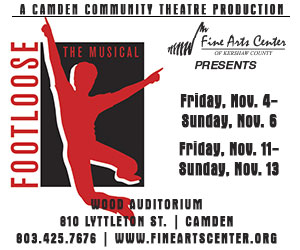
Oscar Isaac plays Llewyn Davis in the Coen Brothers new film.
Inside Llewyn Davis is a really good film. Wonderfully led by Oscar Isaac (Drive), who plays the title character, and surrounded by a deep talent pool of supporting characters. Beautifully shot by first time collaborator Bruno Delbonnel (Delbonnel did serve as cinematographer for the Coen Brothers short segment Tuileries in the anthology film Paris, je t’aime). As usual in all the Coen Brothers’ films, the production design is immaculate. Take for instance one three second shot of Isaac walking on the streets of Long Island. So on and so on and so on. To the point that one begins to wonder how much of the process for the Coen Brothers is new and interesting and how much is just how they do things.
~”Playing Davis, Isaac bleeds artistic idealism.”~
Llewyn Davis is a struggling folk singer. Living in New York City in 1961, he is part of the Greenwich Village folk scene that is going through a transformation from the fifties beat movement to the later sixties pop-folk music. Playing Davis, Isaac bleeds artistic idealism. He’s a jerk with issues, but is blessed with talent, though not magnetic, take-you-straight-to-the-top, talent. He’s more of a blue-collar artist, sleeping from couch to couch and paying his way from show to show. (It’s good to see Isaac own a role this deep. His performance in Drive, starring Ryan Gosling, was so memorable that he threatened—save for the fact that he was only in the film for a short time—to upstage Gosling.) Llewyn’s immediate circle of friends and acquaintances includes fellow musicians Jim and Jean, played by an understated Justin Timberlake and a shrewd Carey Mulligan. It’s a bit of an on-screen reunion as Mulligan played Isaac’s wife in Drive. The story follows Davis through the cold New York winter as he struggles to make his living.
At some point during their cinematic resume, it became an event for devotees to go see a Coen Brothers movie. This is a rare thing among film aficionados and can only be said about a handful of living filmmakers. Scorsese, yes, but wavering. Spielberg, not really, anymore. There are others but in general, the idea of the auteur is disappearing. Joel and Ethan Coen offer something new with every film. A new experience. A different way of looking at a story.
~”Ever since their first film Blood Simple, Coen Brothers films have always seemed to have the wry grin of a six-year-old boy who has snuck away while his mother wasn’t looking, magnifying glass in hand and looking for the nearest ant hill in the sun.”~
Looking at their work from a few steps back, Coen Brothers films exist essentially in two forms; the story and the setting. Prior to adopting existing work, their story lines and settings could be interchangeable. Neither required the other to be successful. Think about two of their films and switch the characters. It works. Their lead characters are usually alone but in control of their lives. They are searching for something, lost or at a moment of change in their own world and searching for the next chapter. But there has always been a sneaky youthful playfulness to their films. Ever since their first film Blood Simple, Coen Brothers films have always seemed to have the wry grin of a six-year-old boy who has snuck away while his mother wasn’t looking, magnifying glass in hand and looking for the nearest ant hill in the sun.
Over the course of ninety minutes of Inside Llewyn Davis, we are given an assortment of Coen Brothers’ greatest hits; The symmetrical office shots, the secretary typing away, the peculiarly violent unknown stranger, extended tight hallways, the awkward pauses in conversation, the semantic misunderstandings and the up-to-no-good traveler (again by John Goodman—see Barton Fink, O’ Brother Where Art Thou?). Mulligan does a fantastic job with her role, given that it falls in the typical Coen Brother female supporting lead genre; (there were moments where it sounded as if Maude Lebowski were talking). One thing that has shifted in their movies is the allowing of actors to put their own voices in the dialogue. You can still hear the writing, but it has taken many films for the Coens to loosen the reigns this much on how a scene is delivered by the actors.
As the movie closes in on the end, we are given a bit of a plot twist and one idea about the whole reason for the film presents itself—what if the whole story is one big personal existential exercise, by the filmmaking pair, in the mid-life search for value in one’s artistic work? And what would their work be without each other?
All of the clues are here for such an effort. We get the walks down Coen Brother Memory Lane, as if they are an old rock band on a reunion tour doing a medley of all the old hits, but acoustic versions. It is as if the brothers themselves are looking back on their work, giving it to us again and questioning its validity. Towards the end of the film, the exclamation point is made when Llewyn stops and stares at a movie poster hanging outside a theater. Is it meant for Davis or are the Brothers letting us in on something about themselves?
With such eclectic work that has received the highest honors, those who create could understand the possibility that the Coen Brothers themselves still have to defend each new idea. This is best reflected in a scene where Llewyn doesn’t react so well to being asked to perform at a dinner party. Inside Llewyn Davis is a beautifully subtle film about The Artist and creating. It doesn’t make excuses and it doesn’t pander to an audience with preconceived notions. It is quite simply the song that the Coen Brothers want to play for us right now. And it is a wonderful song indeed.
~~~
Inside Llewellyn Davis plays exclusively at the Nickelodeon Theater through January 23rd.
— Wade Sellers






.jpg)